Share
It’s Magic! How Cameradactyl Built a 20×24 “Polaroid” Camera
It’s been a minute since I last attended a photo workshop, but after seeing a friend’s Instagram post of a magical, large format “instant” ...
It’s been a minute since I last attended a photo workshop, but after seeing a friend’s Instagram post of a magical, large format “instant” print, I was intrigued. Photo entrepreneur Ethan Moses visited New York City in October after traversing the country from Albuquerque, NM in his gear-filled van which included a self-constructed 20×24 camera and 20,000+ watt seconds of strobes needed for his direct-to-positive paper printing process.
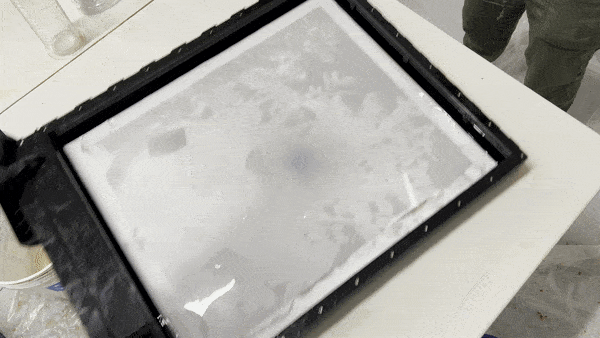
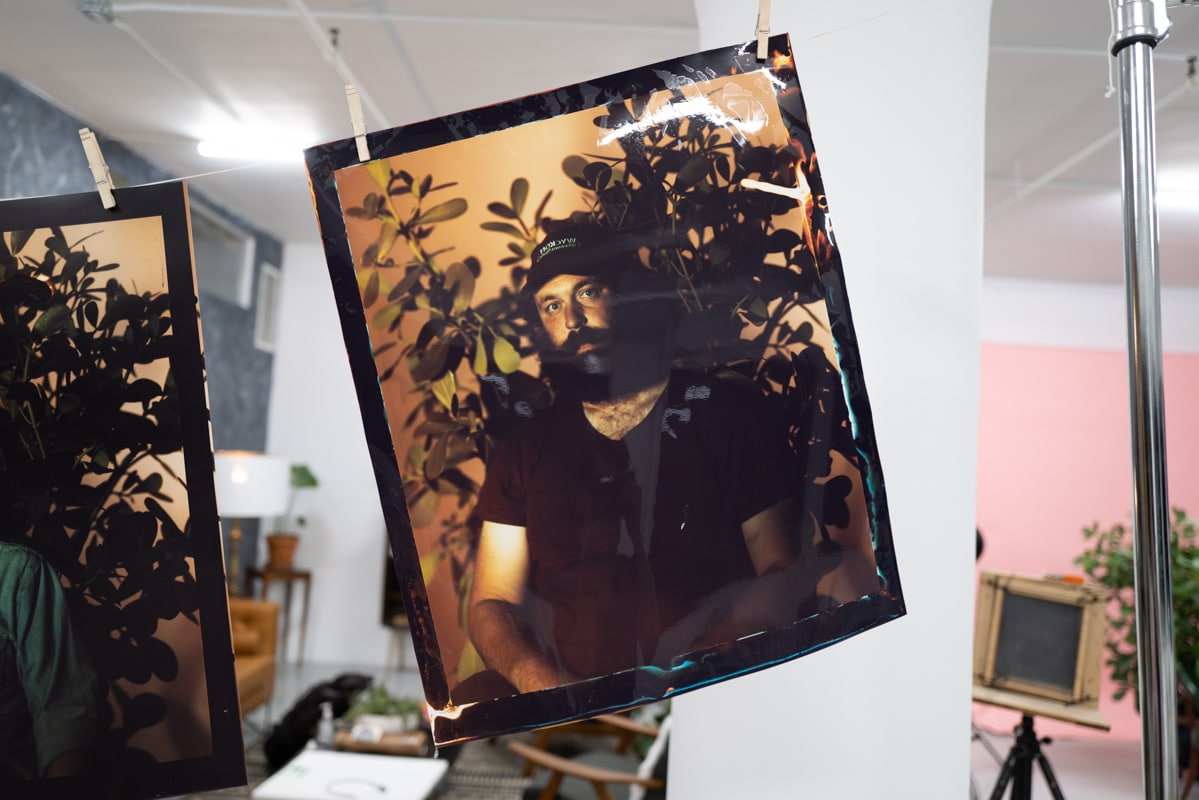
The one-time physics major has spent time as a professional photographer, used camera purveyor, medical equipment broker, and precision mechatronics engineer for canning and fermentation equipment. But his love of cameras and autodidactic nature led him to explore the world of 3D printing, circuit fabrication, and programming, which in turn led to the launch of CAMERADACTYL, his large format film and accessories business.
In our increasingly digital and virtual-lived world, I’m always interested in people that build stuff from scratch. How did you learn enough about engineering and fabrication to get to where you are today?
The vast majority of the hard skills that I have are learned from the internet. I like to say that we are all smarter now than the smartest person in the world, pre-youtube. It’s really crazy what you have access to now that just wasn’t there at your fingertips, or in your pocket 20 years ago.
It’s really been amazing that when working on a problem, I can see a spectrum of solutions right at my fingertips, and can learn many of the skills I lack without getting out of my chair. I learned to program from a set of youtube tutorials for highschool kids, and then stack exchange when things got more complex.
The other half of the equation is time. Nobody had a video and fileset to make the brancopan on the internet before I put it on youtube and github. They had enough that I could learn CAD, learn to fix a 3D printer, learn to use a laser cutter and open an internet store, and from there it was up to me to burn some months all day every day, to put the pieces together. Putting the pieces together has always taken time and effort, but finding those pieces has really never been easier. Thank You Wonderful People of the Internet.
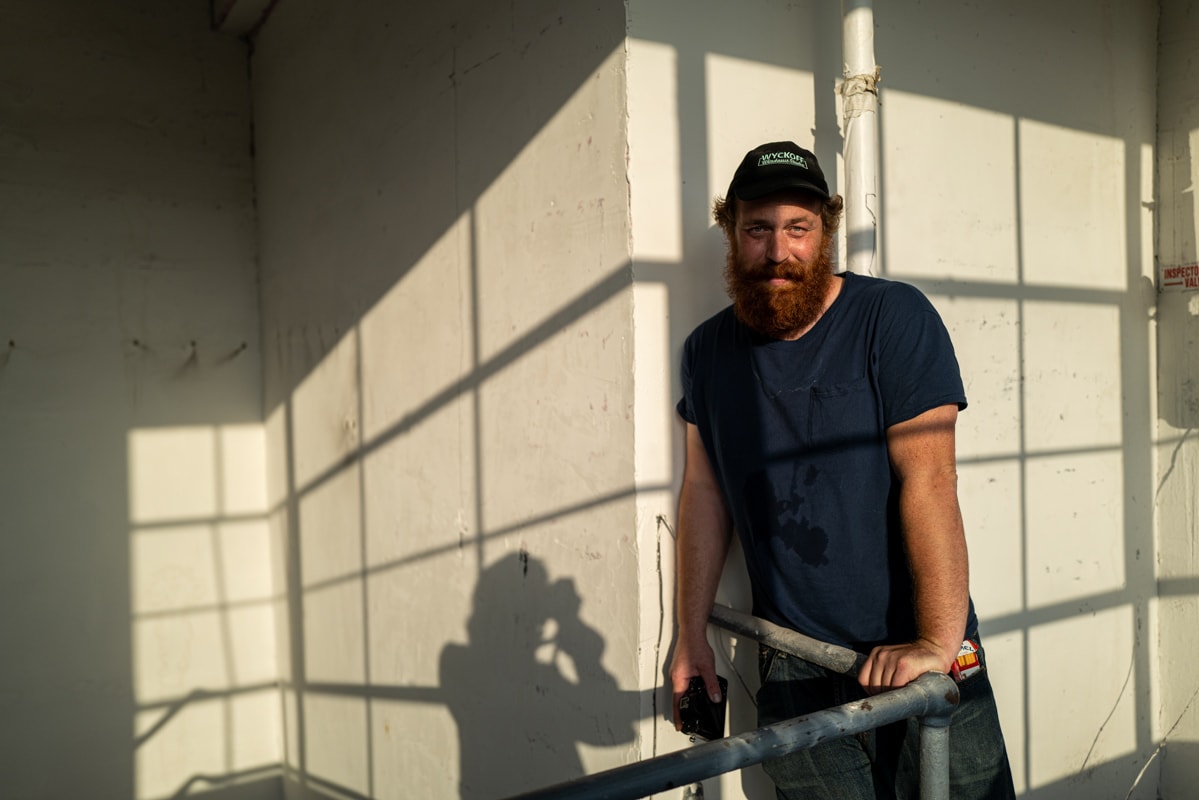
You’ve been building cameras for several years – most recently a series of 3D-printed cameras in 35mm and 4×5 flavors that are available for sale on your website. What led you to want to build a 20×24 camera?
I wrote an entire article about what lead me to build the 20×24 camera on Emulsive.org.
The quicker version is that I was fascinated by the 20×24 polaroid, in particular, the work of Elsa Dorfman, since I saw a picture of hers as a profile thumbnail on photo.net in 1998 or 1999. I have also been fascinated by Afghan Box Cameras, Camera Minuteras, Cuban polaroids, or lab cameras by any name, since I read about them in an issue of Popular Photography about the same time.
I became friends with Youtube Superstar and fellow Burqueño Joe Van Cleave a few years ago, and we like to hang out on Tuesdays and tinker with things other than whatever main project I am working on at the time. Tuesdays are the time when I allow myself to work on something that doesn’t necessarily have a chance of becoming a product, but is nevertheless interesting to me.
Joe had built an Afghan box camera before we met, and had done some experiments with black and white reversal prints, which I was interested in from his channel also long before we met. We did some tinkering with the process on our workshop Tuesdays and got pretty good at it. This branched out into me tinkering with the color reversal process – again through much internet research – and getting pretty good results from that too.
We were thinking about what format cameras we would want to build and while 4×5 and 8×10 are natural and reasonable formats, because of the history of the 20×24 polaroid, 20×24 was almost immediately on our minds. We thought that the reversal processes in some sort of Afghan box camera would be an excellent functional replacement for many of the Polaroid products that are no longer made and haven’t been made now in a long long time.
The 20×24 never would have been actually built if it weren’t for my idea to build a self developing back. Self Developing Backs were initially just an idea and a few sketches, that was a theoretical solution to how you could build an afghan box camera large enough to shoot a 20×24 inch print. That design turned into 4×5 and 8×10 self developing backs, which turn just about any large format camera into a really portable afghan box camera, which actually are products (soon to be released). The fact that the 4×5’s and 8×10’s were viable products made me think that I could spend the time building a 20×24 as a sort of marketing tool for the smaller and more ubiquitous formats, much like the original seven cameras that the polaroid corporation made. More on this in the emulsive article.
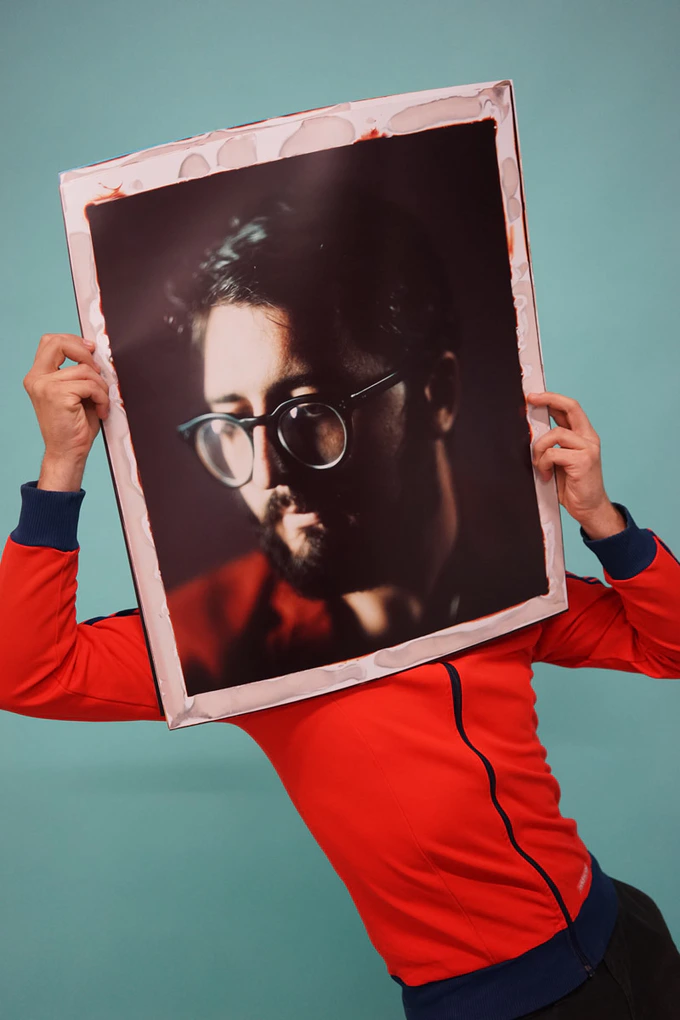
In some of our informal conversations, I was struck by the way you think about marketing. You’ve launched multiple Kickstarters, have a YouTube channel, co-host a podcast, and use the “traveling carnival” (i.e. driving from city to city to run workshops) to market your cameras. Can you share some of your thoughts about your marketing strategy for an independent entrepreneur in a niche industry making a full-time living?
This is a really interesting question to me, but I am not sure that I will be able to give an answer that I am completely satisfied with. Building and running business is a constant project, unlike a specific product which may have different but ultimately finite cycles.
A lot less people shoot film these days, but those who do are real enthusiasts, and they are on the internet, they are on social media, they have podcasts and youtube channels, zines, blogs, you name it. It’s been possible to make cameras at a small scale now because I can sell to a global enthusiast community.
It’s great getting to have customers who are as passionate and nuts about film photography as I am. Many of them have become friends. I met my buddy Simeon because he sold a hasselblad to my friend Vadim on Reddit, and Vadim connected us because we both live in Albuquerque. It’s been a pretty pleasant thing to use social media to actually meet and talk to people to the extent that I have time to do so.
I am on the Homemade Camera Podcast more or less just so I have an excuse to talk to other people who build cameras about what they do, on a regular basis. I don’t know that I have a strategy, per se, but I guess I can say that I recommend doing “marketing” that is enjoyable to you.
I’m fascinated by the fact that you can learn virtually anything on YouTube. The tinkerer community for analog cameras and processes is niche, but very present. How much has the availability of these videos (and creators) inspired and accelerated your interest in building cameras and exploring alternate processing?
I will be honest, I don’t think I learn too much from “camera youtube” per se, but I love the videos and the people very much. For learning direct things, I have watched a ton of camera repairs and teardowns. I have a favorite Japanese repairman and repair parts seller called “KnobbySparrow” on youtube and ebay. The only english in his videos is “a-press” and “a-protec”, but I can watch him pull a leica shutter apart and put it back together on slo mo and take notes, and follow along and go back when I missed something. He’s an absolute legend. Most of the other channels that I watch to learn things are more engineering focused, electrical engineering and programming channels, and the occasional 3d printer repair or teardown.
That being said, there is an AMAZING AND WONDERFUL WEALTH of camera and photography related info out on youtube. From my friend Joe Van Cleave – who often makes a video about our tuesdays together, but also thousands of his own investigations into pinhole cameras, telescopes, alternative processes, etc, to Lucus Landers who did an amazing series on casting and milling himself some gorgeous metal cameras in his basement bedroom metal shop in Brooklyn. I have tried to give back a bit on youtube too, like the brancopan build and assembly videos, the color reversal videos, and a pair of videos that I made a long time ago about adding manual shutter speeds to a yashica electro (or conceptually, any ‘70’s era integrated meter ‘auto’ rangefinder), and building a quick and dirty shutter speed tester for about $5.
There are lots of inspirational makers too, who don’t necessarily make technical content, but nevertheless beautiful cameras. I am thinking now about Sandeha Lynch from the UK, who just released about a half hour long video looking at all the cameras he’s built over the last 30 years, and some of the photos he’s taken with them. I was glued to the screen watching the progression of what Sandeha made over my entire lifetime. Of course, this is probably a good time to plug the Homemade Camera Podcast youtube channel, which is just a collection of unedited 1-3 hour long talks that Graham, Nick, and I have with camera makers, while recording a podcast. If you are going to watch one episode, make sure it’s E60, when we talk to Hervé Ellena, who just floors us all with one crazy machine after another that he built on a 30 year quest for a perfect camera to capture motion in the way he wanted. It’s really incredible.
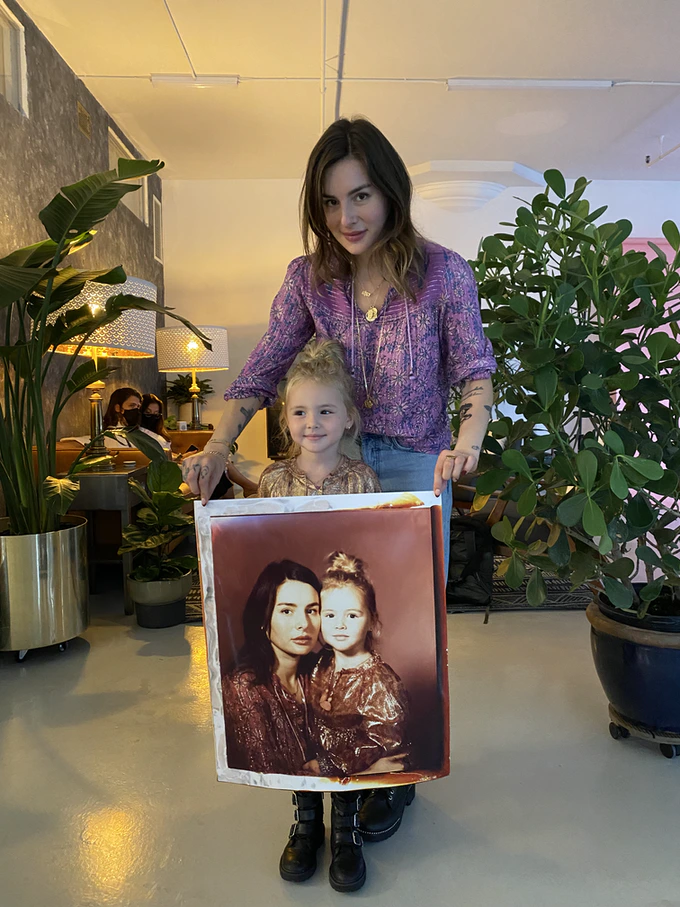
You filled multiple workshop classes and portrait sessions during your trip to NYC. Why do you think people respond so strongly and positively to this type of photography?
To be honest I was really surprised that all the workshop and portrait sessions sold out in NYC. I think first and foremost, credit goes to Kyle Depew at Brooklyn Film Camera and Wyckoff Windows Studios for building so much community around film photography and instant photography in NYC, and all over the internet. Without a really thriving art and photography scene in NYC, none of my ‘traveling roadshow’ events would have been possible.
The other thing that I think really got people excited was the process, and the camera, and the history behind the original 20×24 polaroids. Everyone interested in instant film, it seems, has had their full attention caught by those cameras and processes at one point or another. The fact that there is no longer media being made for the cameras is sad to me and I am sure most people who loved that body of work, but also, all the more exciting that I was able to bring back a functional replacement for it.
There’s something about instant film that makes working with it feel more collaborative, because after every shot, everyone working on a picture looks at the frame, discusses, and makes changes together. It’s a more social medium, for lack of a more eloquent way of putting it. Also, I think there’s something special about the RA-4 reversal process. It’s about as fast if not faster than the original polaroids, but it requires some liquid chemistry where the polaroid did not. This makes it a little more difficult to work with, but also, the nature of the process means that the print is exposed to light during the final development step, which means that people can see a color image being developed with their own eyes.
The last thing that I think people really respond to is that they are getting a one of a kind, giant print, with the colors and tones of a chemical color photo print. If you ask me, RA-4 is the most beautiful color printing process bar none, and the prints are gorgeous, both from negatives, and, if you get it right, in a direct positive print like I am shooting on the camera.
You designed and built the “film backs” that we used for the 20×24 camera with a laser cutter. The backs serve as both a paper holder and developing tray. Any plans to make your 20×24 and backs available for purchase?
I have been asked plenty about purchasing 20×24 systems, which I am open to manufacturing, but I really need to sell maybe 20 or 30 of these things to make it worth my while to set up a new shop and hire help to build them at reasonably efficient prices.
Where should people go to find out about your future workshops?
Well, people can always find me at cameradactyl.com and @cameradactyl on Instagram. My next event will be in Los Angeles in February, and I am running a Kickstarter campaign now to sell tickets for portrait sessions, workshops, full and half day private camera rentals, and open studio days. This is one of those projects that I’m really excited about, but am asking the community to share in the risk of driving a truckload of equipment across the country, renting a studio in LA for a month, hiring assistants, renting hotels…, by pre-booking everything before I go out there. If you’re interested, please check out the campaign here:


